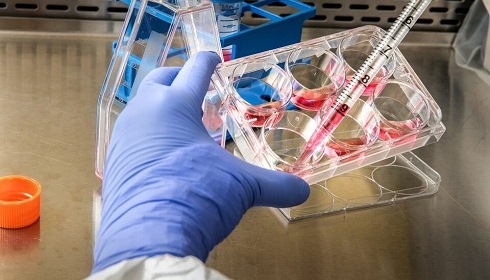
New drug shows promising result in overcoming hormone therapy resistance in breast cancer during the initial trial
Researchers from the University of Texas, Southwestern Medical Centre reported that a new experimental drug that significantly suppressed the growth of cancer cells among the oestrogen receptor (ER)-positive breast cancer patients, especially those carrying the Y537S mutation, thereby showing promising during preclinical trials.
The drug belonging to a class of drugs called BET inhibitor prevents the interaction between Bromodomain and Extra-Terminal motif (BET) proteins and acetylated histones found in the arginine and lysine in the nucleus of the cells.
BET proteins are known to enhance the activity of many genes that drive the proliferation of cancer cells, making them an attractive target for cancer drugs.
Y537S mutation is a common mutation found in almost a third of breast cancer patients resulting in the aggressive spread of the cancer cells thereby reducing the survival rates in the affected patients.
Commenting on the trial findings, Dr Prasanna Alluri, Assistant Professor of Radiation Oncology, a member of UTSW’s Harold C. Simmons Comprehensive Cancer Centre, and senior author of the study said, “Identifying drugs that selectively target this highly aggressive mutation has been elusive.”
“Now we have uncovered a new therapeutic vulnerability in breast cancers that have developed resistance to endocrine therapy through the acquisition of the Y537S mutation,” he added.
“When used early, this drug may prevent or delay the development of endocrine therapy resistance by blocking an increase in the proportion of cells harbouring the Y537S mutation,” he further added.
According to available data, about 75% of breast cancers are ER-positive, meaning that the growth of these tumour cells is fuelled by the binding of oestrogen to the oestrogen receptor protein in cancer-affected cells.
The researchers said that they identified the drug after over 1,200 existing drugs or drug candidates against breast cancer cells.
Additionally, two other BET inhibitors also showed higher selectivity toward Y537S cells, they added.
The researchers further said that OTX015 also showed high effectiveness in inhibiting the growth of tumours harbouring the Y537S mutations when implanted in mice.
Furthermore, when combined with abemaciclib, a clinically approved drug used to treat breast cancer patients, OTX015 showed higher efficacy in inhibiting tumour growth than the existing accepted treatments.
“Our mouse studies showed that OTX015 plus abemaciclib caused 50% greater tumour reduction than fulvestrant plus abemaciclib,” Dr Alluri said.
According to him, there are several BET inhibitors in early-stage clinical trials, including OTX015, which was shown to be safe in a phase 1 trial.
“This new data can guide the design of BET inhibitor trials by identifying patients who are more likely to respond to this promising treatment. Our study also uncovers promising BET inhibitor combination treatments, which can also be further validated in future clinical trials in breast cancer patients,” Dr Alluri said.
“Our hope is that such trials will lead to improvements in both the prevention and treatment of endocrine therapy resistance in patients with breast cancer,” he added.